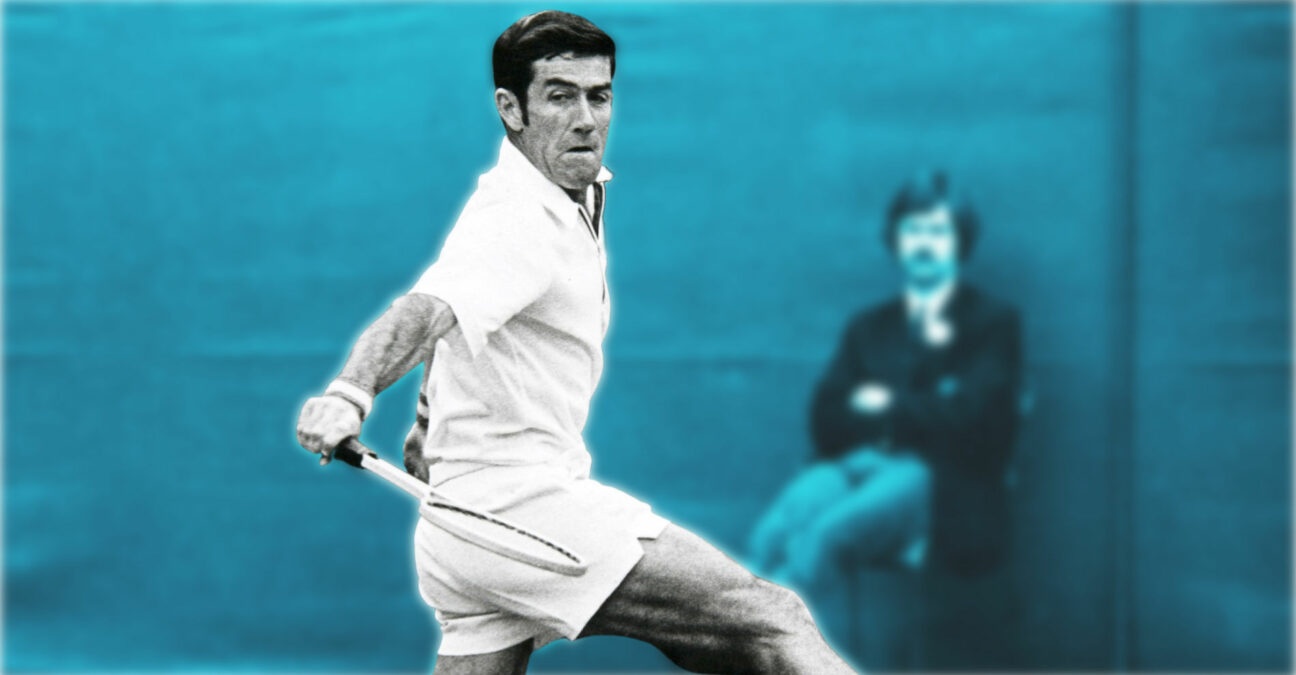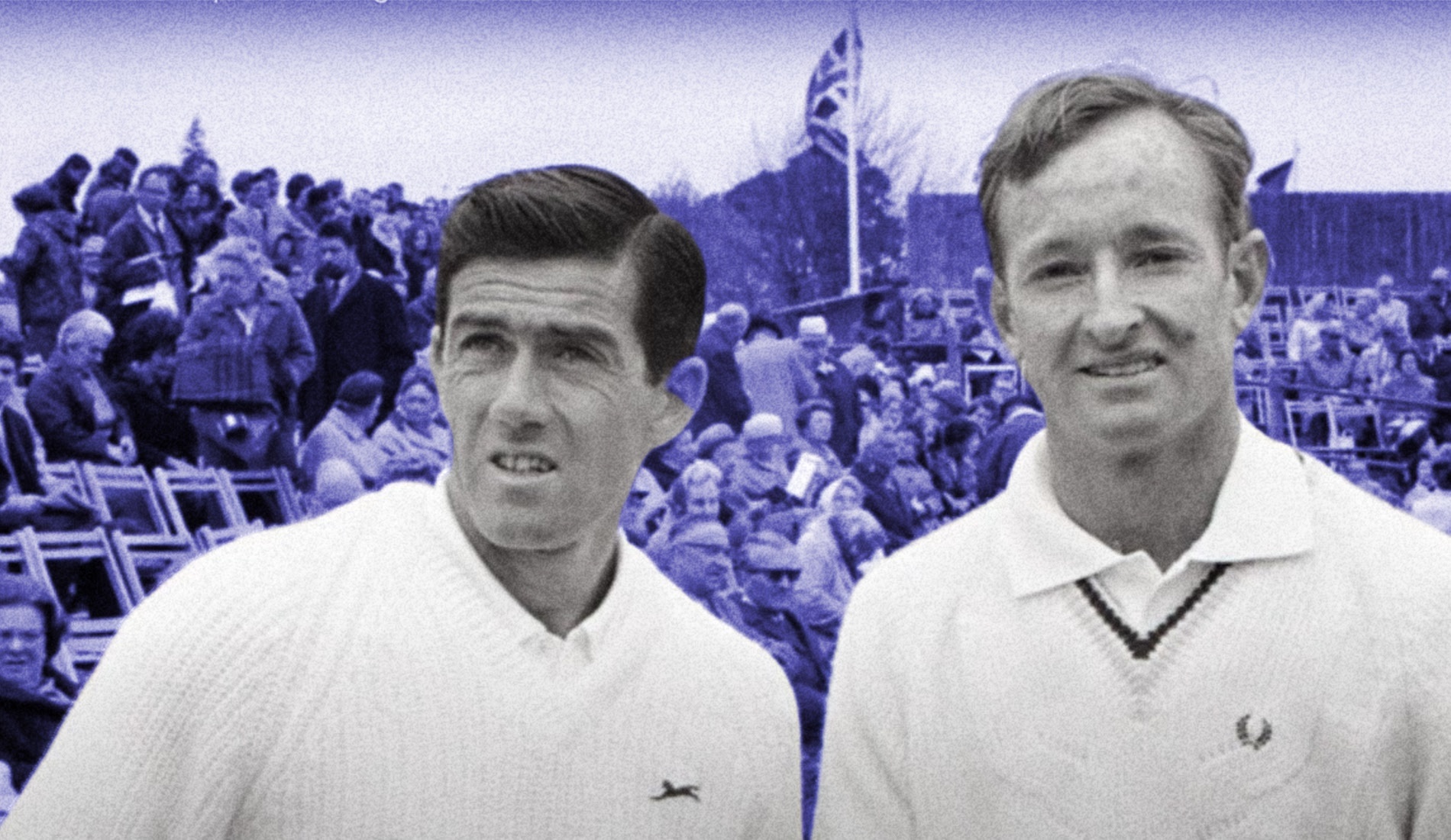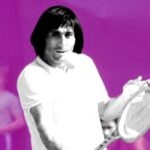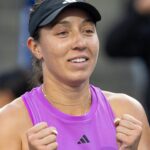January 3, 1972: The day Ken Rosewall became the oldest Grand Slam winner in the Open Era
Every day, Tennis Majors looks back at the biggest moments in tennis history. On January 3, 1972, Ken Rosewall won the Australian Open and created an Open Era record that stands to date
 Rosewall OTD 01_03
Image Credit: Panoramic/ Tennis Majors
Rosewall OTD 01_03
Image Credit: Panoramic/ Tennis Majors
On this day, January 3,1972, Ken Rosewall won the Australian Open for the fourth time (the second in the Open Era), 19 years after his first title in 1953. By defeating Mal Anderson 7-6, 6-3, 7-5 in the final of the tournament at the age of 37, he became the oldest player in the Open era to win a Grand Slam – a record that still stands to date.
Although Rosewall would play in two more Grand Slam finals, the 1972 Australian Open would remain the last major title of his career.
The players: Ken Rosewall and Malcolm Anderson
- Ken Rosewall: The Aussie legend whose dominance spanned the pre and post Open era
Ken Rosewall, born in 1934, was one of the best amateur players of the 1950s, winning four Grand Slam titles (the Australian Championships in 1953 and 1955, Roland-Garros in 1953 and the US Nationals in 1956), and participating in three victorious Davis Cup campaigns (1953, 1955, 1956).
At the end of 1956, shortly after getting married, the Australian signed a contract with Jack Kramer and turned professional, which at the time meant that he could no longer compete in Grand Slams events or the Davis Cup.
Rosewall became one of the best players in the pros, winning 15 major titles. Nicknamed “Muscles”, he won the pro version of Roland Garros four times (from 1960 to 1963). In April 1968, he won the first tournament of the Open Era in Bournemouth, beating Rod Laver in the final (3-6, 6-2, 6-0, 6-3), and a few weeks later, he beat his countryman again in the Roland Garros final (6-3, 6-1, 2-6, 6-2) to win the first “Open” Grand Slam in history.
He then added two more major titles to his impressive record of achievements, triumphing at the 1970 US Open and then at the 1971 Australian Open.
- Mal Anderson: The US Nationals champion of 1957
Mal Anderson, born in 1935 in Australia, Queensland, saw his amateur career peak in 1957. That year, he won his first and only Grand Slam title, defeating compatriot Ashley Cooper in the final of the US Nationals (10-8, 7-5, 6-4).
The following year, he played two more Grand Slam finals, but Cooper took revenge by defeating him in the Australian Championships final (7-5, 6-4, 6-4) and then in the US Nationals final (6-2, 3-6, 4-6, 10-8, 8-6). Following his excellent results, he turned professional, and had his best performance as a pro in 1959, when he won the Wembley tournament by defeating Pancho Segura in the final (4-6, 6-4, 3-6, 6-3, 8-6).
The place: Melbourne, Australia
Unlike other Grand Slam tournaments, the Australian Open (first called the Australasian Championship and then the Australian Championship) has changed location several times over the years. The event even changed cities each year before moving to Melbourne in 1972. No fewer than five Australian cities have hosted it at least three times; Melbourne, Sydney, Adelaide, Brisbane and Perth.
The dates had earlier been a bit flexible, switching between the beginning of December and the end of January, making the Australian Open at times the first and at times, the last Grand Slam of the season. At the time, most of the top players skipped the event due to its remote location and insufficient prize money.
The facts: Rosewall gets a police escort to reach the stadium
At the end of 1971, the war between the International Tennis Federation (ITF) and the various professional circuits was at its peak. Despite the beginning of the Open Era in 1968, the situation had deteriorated in 1972 and many professional players found themselves once again excluded from the Grand Slam tournaments.
To get around the problem, the organisers of the Australian Open had the idea of starting the tournament at the end of December in1971, before the new regulations came into force. Most of the top players had already backed out, not wanting to travel that far around Christmas. Ken Rosewall and John Newcombe headlined the tournament but big names like Rod Laver, Arthur Ashe or Stan Smith were missing.
While Rosewall made it to the finals without too much difficulty, Newcombe was eliminated in the quarter-finals by 36-year-old Anderson (2-6, 6-3, 6-4, 3-6, 9-7). Rosewall’s biggest scare of the tournament came on the day of the final, when he got stuck in traffic with little time to spare.
Fortunately, he managed to stop a policeman on a motorbike, who first told him that there was no point in hurrying to see the final: “There’s no point in going to tennis, man, they’ll never let you in”,” he said, as recalled in the book Muscles, the Story of Ken Rosewall. Rosewall then showed him his papers to convince him that he was not going to the stadium to see the final, but to play it, and a police escort then dropped him off at Kooyong.
The final itself was rather one-sided. Rosewall was a year older and Anderson had only come out of retirement a few weeks before the Australian Open, having spent the last four years giving squash and tennis lessons. “Muscles” won 7-6, 6-3, 7-5. He was the oldest player in the Open Era to win a Grand Slam tournament, but he didn’t think that it was very good news for his sport.
“It’s not good for tennis in general that I can still win,” he told The Age, a Melbourne newspaper.
His opponent Anderson shared his view. “Young people today have it too easy. There’s too much money at stake, and they don’t have to fight to make a living,” Anderson said according to the New York Times.
What next? Rosewall reaches two more Grand Slam finals
Ken Rosewall would play two more Grand Slam finals before his retirement, both in 1974, at almost 40 years of age. Each time, he would be beaten by the new world No 1 Jimmy Connors. At Wimbledon, Connors beat Rosewall (6-1, 6-1, 6-4) while the US Open final was even more one-sided by Connors (6-1, 6-0, 6-1).
Rosewall retired in 1978, having won an estimated 133 titles throughout his career. The centre court at Sydney’s Olympic Stadium was named after him in 2008. To this day, he remains the oldest Grand Slam winner in the Open Era, although Roger Federer would come within one point of breaking that record at Wimbledon in 2019.
Meanwhile, in 1972, Anderson was appointed “Member of the Order of the British Empire” for “services to tennis”. In 2000, he was inducted into the International Tennis Hall of Fame and the following year, he was inducted into the Australian Tennis Hall of Fame.










